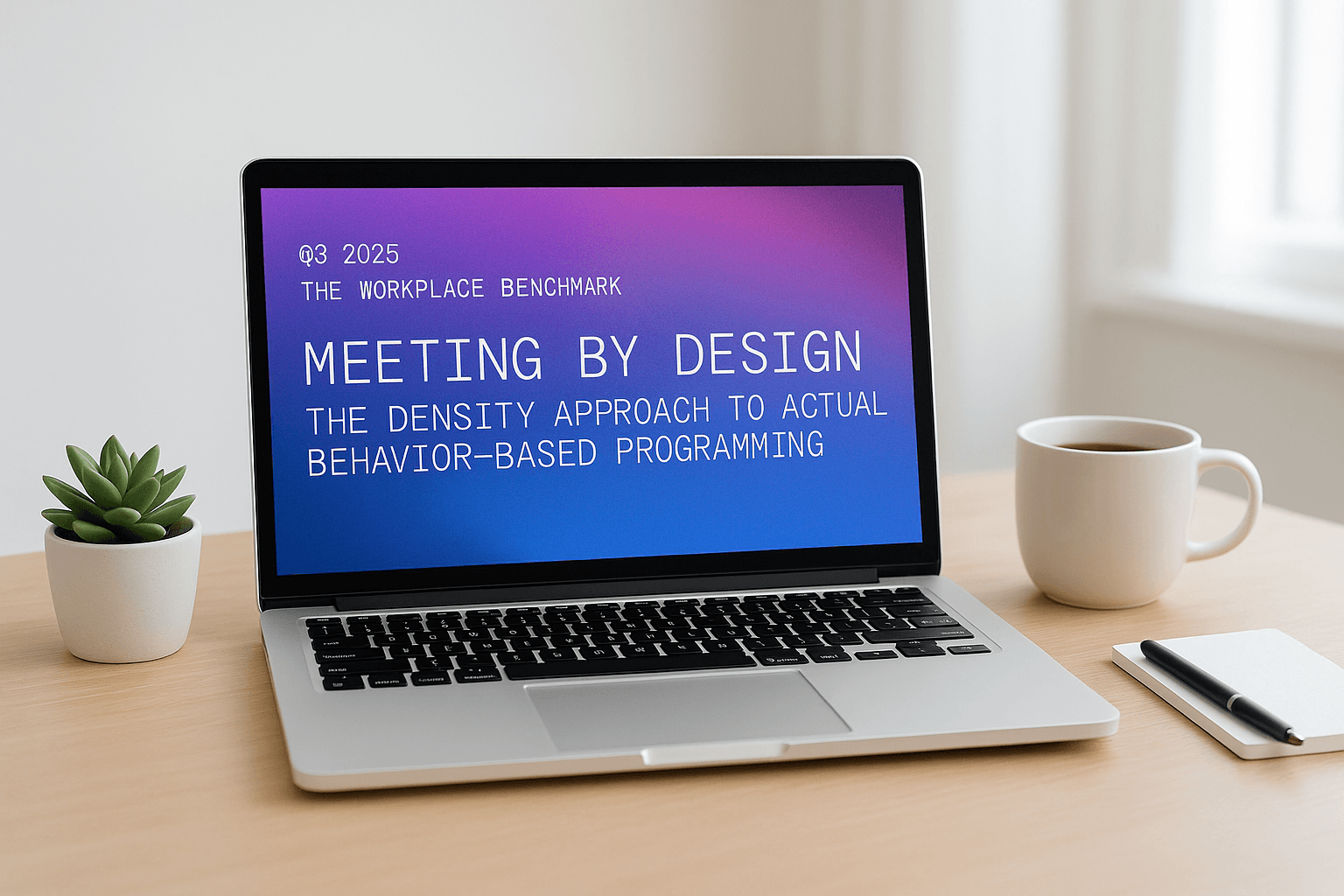Survey: 66% of workers see the office primarily as a place for collaboration
Does a well-designed, amenity-filled workplace motivate employees to work more? We surveyed workers to find out.

To lure and retain the best talent, companies today are investing more effort — and money — in designing sleek workplaces full of amenities. It’s clear C-level leaders understand the value of creating desirable workplaces. Less clear is whether employees are actually swayed by all the bells and whistles—dog-friendly spaces, spa water, and meditation rooms.
We got to thinking: Does a well-designed, amenity-filled workplace motivate employees to work more, stay home less and experience greater fulfillment in their job? To better understand this question, we recently conducted our own workplace experience survey.

There’s good news for employers that have splurged on nice digs: 55% of those surveyed agree with the statement, “my company’s office design and amenities had a positive impact on my decision to accept my job offer.” Within this majority, 13% even said that they “strongly agree.” The remaining 45% disagreed with the statement, including 14% who “strongly disagree.”
55% of those surveyed agree with the statement, 'my company’s office design and amenities had a positive impact on my decision to accept my job offer.'
The return on investment became less clear when we delved deeper and asked people how they ultimately view the function of their workplace. What purpose does an office really serve?
More than anything, the surveyed workers said they view their office environment as a place for in-person collaboration (66% of respondents) and socializing with coworkers (57%). We all know the feeling of having a breakthrough conversation in person or spending face time with a coworker who works in a different department.
Two-thirds (66%) also reported that they view the office as “an environment for completing focused work,” suggesting that they view their workplace much the same as their parents may have decades ago. While cubicles may have fallen out of favor, it’s clear that people still seek space and time to work in a focused manner.
Perks still matter, however: nearly one-third (32%) say they do enjoy the available amenities and around one-fifth of workers (21%) see the offices as an environment for recruiting new talent.
To get a wider breadth of responses, we also allowed those surveyed to provide freeform feedback. One person said that “my office is an environment for making clients feel comfortable,” while two others see it as “an encouraging environment” and a “safe work space.” Finally, and most troublingly, one respondent said: “My office is a raucous, noisy environment.”
The results seen here are certainly not conclusive. We surveyed just 100 people, and different companies in different locations with different cultures may find that their employees love or hate their work environment to varying degrees.
How do your workers actually feel about coming to work? What are the main reasons they value being there in person compared to working remotely?
Executives would be wise to try to take something away from these results, however. And more than anything, that lesson should be to start asking questions.
How do your workers actually feel about coming to work? What are the main reasons they value being there in person compared to working remotely? Are there deficiencies in the environment that a significant number of people can pinpoint? What amenities that you offer are universally praised?
By asking the right questions, you can take the guesswork out of office design and get much greater insight into what the most important members of your organization really want.
Key Takeaways

DisruptCRE founder shares how corporate real estate is changing
Companies are moving employees from underutilized offices into "space as a service” options with utilization data.
Watch now
Half of offices are empty but you still can’t find a meeting room
Employees waste up to 30 minutes a day looking for a meeting room to meet in workplaces.
Read moreMost recent

Meeting space playbook: programming ratios that really work
Forget static formulas. This new research-driven playbook shows how to use real behavior to right-size your office for today’s meetings.

Space waste: The industry’s naughty and nice list
Our sensors spilled the beans: What industry is winning, who's wasting and who's hogging your office real estate.
.png)
Improve your occupancy sensor RFP with our best practice guide
Discover essential questions to simplify your occupancy sensor RFP process and confidently choose the right vendor.
.png)
Room raiders: The office upsizing epidemic
Tiny teams hogging big rooms leave large groups stranded—welcome to the new war for meeting space!
Explore other Density Products
Atlas for Workplace
Insights for the workplace that help you cut costs and deliver better spaces.
Learn more